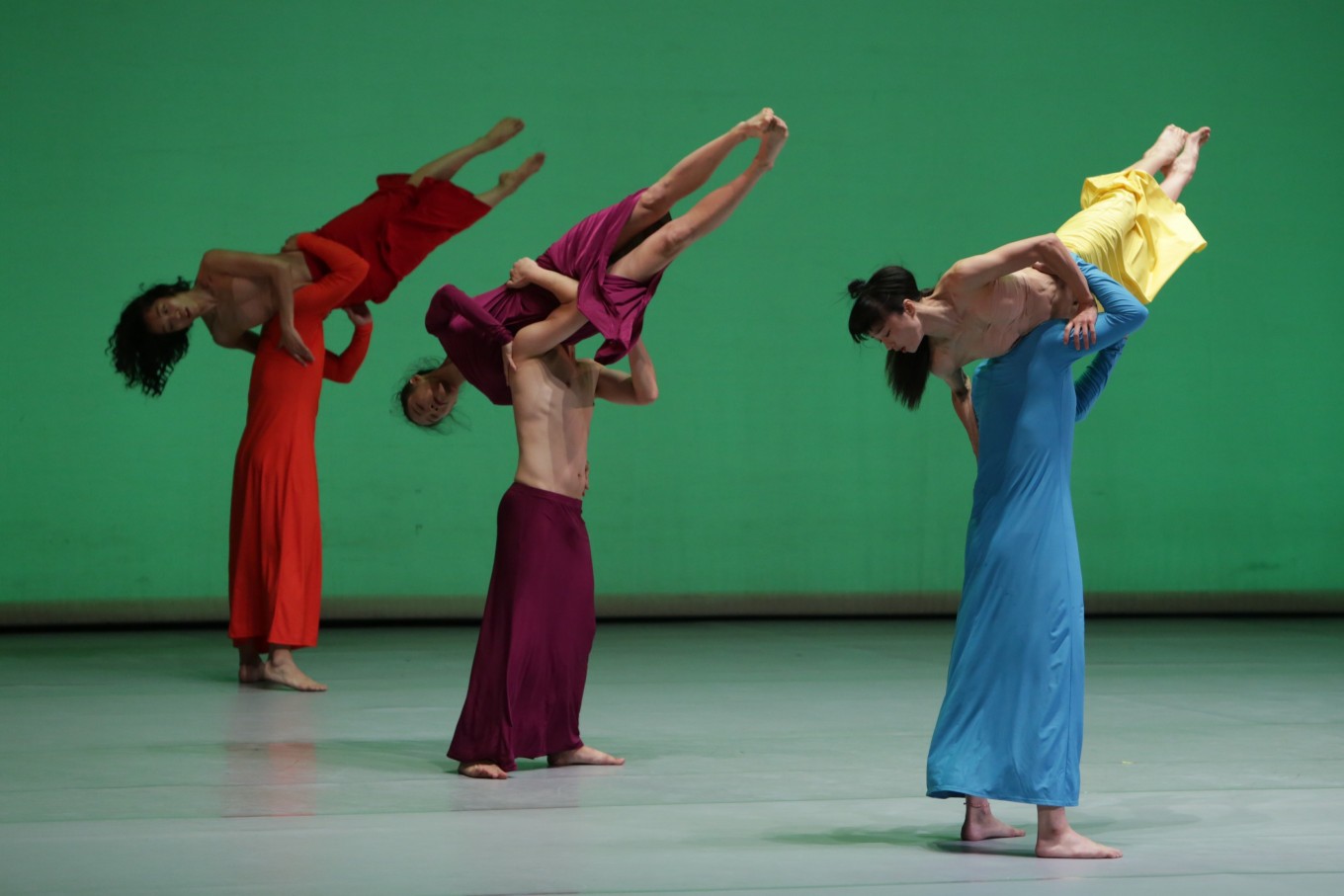‘Let Me Change Your Name’: Contrasting duality on identity, society
Change Size
 South Korean choreographer Ahn Eun-me officially opened the 14th edition of the Indonesian Dance Festival (IDF) with her contemporary dance number called Let Me Change Your Name. (JP/Wendra Ajistyatama)
South Korean choreographer Ahn Eun-me officially opened the 14th edition of the Indonesian Dance Festival (IDF) with her contemporary dance number called Let Me Change Your Name. (JP/Wendra Ajistyatama)
L
em>Let Me Change Your Name — created in 2006 with performances around the globe ever since — is described as “questioning identity and the place of individuals in modern society” through contrasts and repetitions.
The performance opens with six dancers wearing ankle-length black dresses swaying somberly to an electronic beat, almost in a funereal trance, exacerbated by the music’s vaguely shamanistic tune.
The dancers’ movements are slow and graceful as they slither and walk across the stage in tandem, not unlike automatons repetitively going about their tasks.
As the dancers exit the stage, a bright pink light flashes, and the six return, swapping out their black attire for brightly colored clothes while moving about to an electronic K-Pop-esque beat not unlike models walking on the catwalk.
Perhaps it is a trick of the mind for someone who has attended numerous fashion shows, but the music does indeed resemble that heard on the runway, with its repetitive, vocal-less beat making it easy to sync with the dancers’ gestures.
The dancers themselves move much more energetically in the scene, with more jumps and swishes than in the first part, yet still retaining elements of the earlier choreography.
A notable part in the section is when the dancers occasionally lift up their skirts, revealing a flash of white undergarments.
The movement could have been construed as sexual, sensual yet it never feels like it was meant to titillate, perhaps because of the sheer rigidness of it, like a mindless ritual carried out by emotionless, androgynous robots.
If you are not distracted by the constantly repeating sounds and movements, there is a certain symbolism that can be unpacked from Let Me Change Your Name, seen throughout the entire 75-minute composition.
The main theme of the piece is without a doubt an observation of identity in a society that could be conservative, yet ever changing.
Ahn explained that Let Me Change Your Name “will serve to embody the essential instincts of democracy” through the performance.
“The mix of male and female dancers is one way of showing that the body is democratic, as men and women are essentially the same,” Ahn said.
The fluidity of gender cloaked in androgyny is very much apparent in the dancers’ routine, as the dancers in one segment remove their dresses completely without any sense of seduction, throwing the garments to one another to put on and throw away again.
Even the program book acknowledges the costume-as-gender analogy, describing the costume change “as if exchanging skins, gender”.
Other elements of the performance are also steeped in symbolism, if you look at them more closely.
The music, for example, at one point features high-pitched bleeps that resemble ringtones from phones in the mid-2000s, an electronic cacophony that has arguably become an integral part of modern society.
Meanwhile, a poignant scene happens after the lights turn off and the music comes to a stop. The dancers, who have traded their colorful dresses for the black ones from earlier, remove the dresses and spin them around to create a kind of whip, striking the floor with it as if in rage.
As the last dancer leaves the stage, another enters, clad in a red top and white skirt. The dancer picks up the discarded dresses, holding them gently as if mindful of their fragility, before leaving.
That is certainly not to say that Let Me Change Your Name is all about contemplative, navel-gazing choreography. On the contrary, there are some routines that are certainly crowd pleasers, like the more acrobatic performances that resemble a cheerleader’s gymnastics routine.
At one point, the audience broke out in giggles and laughs as the dancers, now clad in white, moved almost comically to the rhythm with an almost dangdut-like body language.
In hindsight, the placement of the routine might be the cause, as it contrasts with the more somber, silent routine that feels much heavier in tone.
All in all, Let Me Change Your Name really sets the mood for a memorable IDF with something for everyone, aficionados and philistines alike.
This year’s IDF, which runs from Nov. 6 to 10, is themed Demo/Cratic Body: How Soon Is Now? and it features dancers from Indonesia and around the globe, such as Mexico, France, India, Germany, Australia and Singapore.
Other than dance performances, IDF also includes workshops, presentations, seminars, master classes, commission works and competitions.
The venues hosting this year’s event include Taman Ismail Marzuki, the Jakarta Playhouse (GKJ), the National Library of Indonesia and the Salihara Community as well as a post-event on Nov. 18 at Taman Suropati in Menteng, Central Jakarta.









